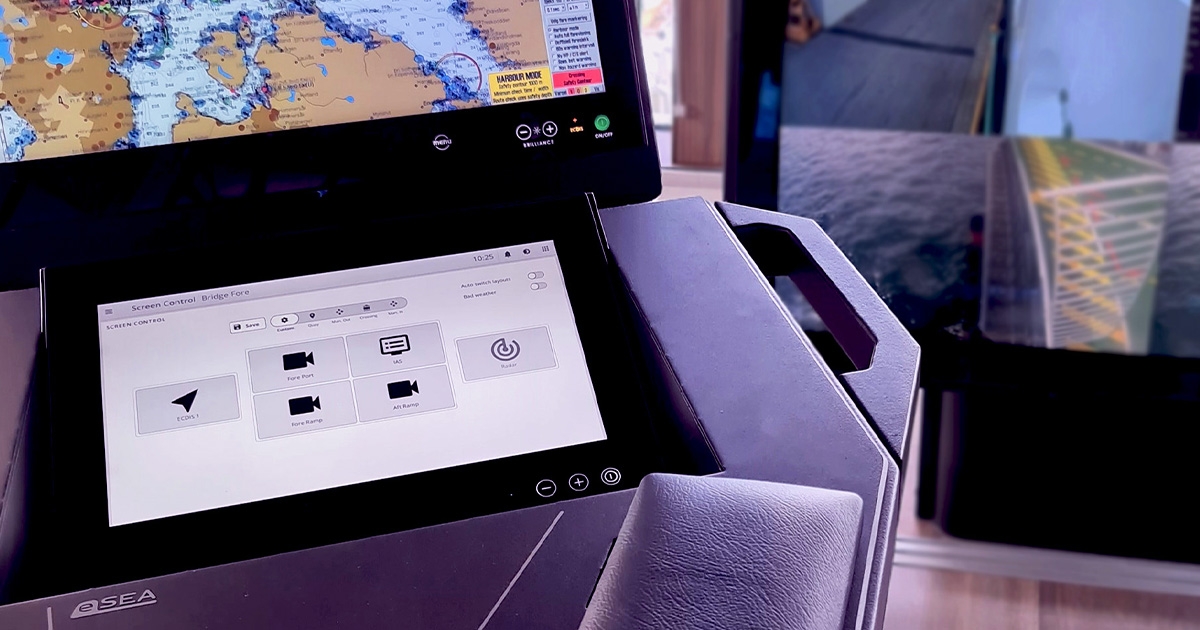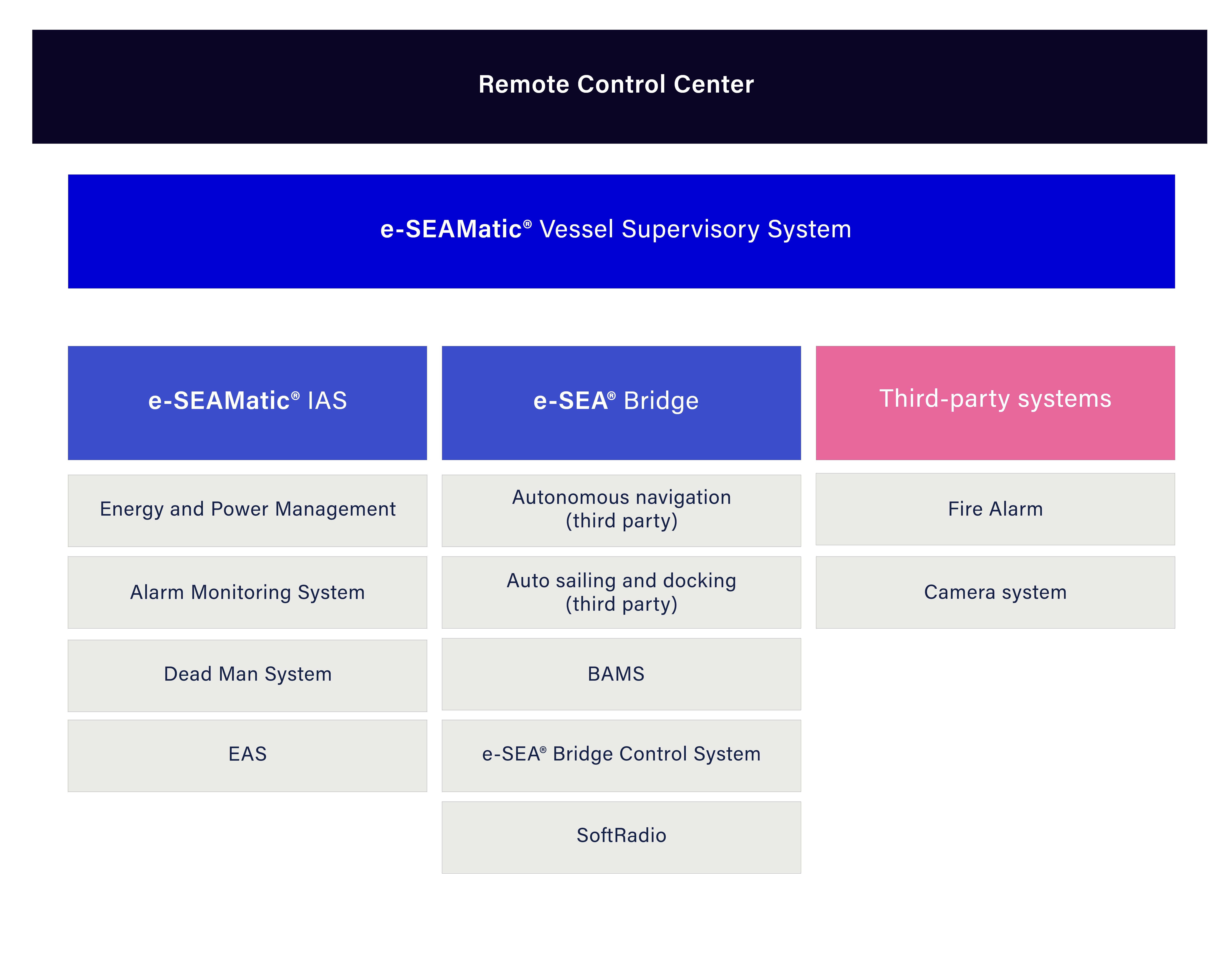The Building Blocks of an Autonomous Future for Maritime Operations

Evolution without Compromise
There is a growing consensus that autonomy will play a significant role in the future of maritime operations. While full autonomy in all maritime sectors might be a distant goal, the incremental adoption of autonomous technologies is already evident.
Autonomy is often associated with fully autonomous, driver-less operations, where the vessel operates without the presence of a crew. Although we are already seeing the development of smaller, fully autonomous vessels, such as autonomous underwater vehicles (AUV’s) and smaller passenger vessels, such as the fully electric Hyke water shuttle, the use of full autonomy in larger vessels is still a way away.
Technological developments for the maritime sectors have gained tremendous speed over the last few years. We have seen impressive technological achievements in the adoption of new fuels; new advanced sensor technology and AI; and in the increased use of digital systems for data collection and vessel optimization. It’s only natural that the development of autonomy is accelerating at the same rate. Autonomous functions have been implemented in offshore vessels, passenger ferries and workboats for several years, including features such as auto-docking, automated safety systems, alarm systems and more.
However, there are strong concerns within the maritime industry regarding the safety and reliability of the increased implementation of autonomy. Especially in terms of passenger vessels, and rightly so; ensuring safety and redundancy is a must when we are dealing with the safety of human lives.
The building blocks of an autonomous future
While the maritime industry has been, and certainly needs to be, open to implementing new technologies, there is a general agreement on the progression of autonomous operations, going from level 0 - manual operation, to level 5 - full autonomy. To ensure safe and reliable functionality, such as security systems, navigation systems and engine control, we need to be mindful of why we want to achieve autonomy and how to safely get there.
Jens Magnar Tveit, automation specialist and team lead at SEAM, leads the development of the company’s automation platform and its surrounding support systems. He believes the key to a safe, autonomous future is scalability.
 Jens Magnar Tveit, Team Lead Automation at SEAM. (Image credit: SEAM)
Jens Magnar Tveit, Team Lead Automation at SEAM. (Image credit: SEAM)
With today’s level of technology and experience, the maritime industry is at a level three – conditional automation: vessels that can perform complex tasks, such as auto-docking or route navigation in certain conditions but need human intervention for scenarios outside their operational parameters. To get to level five, we need to develop robust, fail-safe autonomous systems for complex maritime environments, according to Tveit.
“Scalability and flexibility are paramount for autonomous operations. Scalable systems allow for the enhancement and expansion of functionalities as new technologies emerge or as operational requirements evolve. Moreover, flexible systems ensure adaptability to different vessel types, operational conditions, and regulatory frameworks.
Automation systems play a crucial role in enabling autonomous operations at sea. In the continued development and increased implementation of autonomous functions, we see that automation systems are the building blocks for safe and reliable operations. From bridge- and energy systems, to drives, safety and navigational systems, the automation systems represent the glue that holds and connects everything together.”
One of the few system integrators with an in-house developed automation platform is Norwegian SEAM. Their e-SEAMatic® automation platform, which has been designed with both scalability and flexibility at its core, allows shipowners to adapt and evolve their automation systems as the landscape of maritime operations changes.
“By leveraging flexible and scalable automation platforms, shipowners can integrate advanced autonomous functions without compromising safety or reliability. The modular nature of such platforms ensures that as new functions are added, shipowners can maintain control over the complexity of the systems and ensure that each added function is thoroughly tested and validated,” Tveit explains.
This evolutionary approach, backed by reliable and adaptable platforms, can mitigate the risks associated with adopting new technologies and enables continuous improvement of autonomous functions.
 An example of a system hierarchy for autonomous vessels with SEAM's automation platform as the foundation. (Image credit: SEAM)
An example of a system hierarchy for autonomous vessels with SEAM's automation platform as the foundation. (Image credit: SEAM)
The role of the system integrator
However, the systems themselves only represent part of the equation – to ensure a future-ready solution, you need people with the right combination of competences to put the right pieces together, according to Tveit.
“System developers, UX-designers, electro engineers, automation engineers and machine engineers, all play a pivotal role in the step-by-step progression towards fully autonomous maritime operations. Their roles are especially crucial in unifying diverse technological components into cohesive, scalable, and reliable automation systems that can adapt to evolving needs and emerging technologies.
This group of people specialize in bringing together a diverse set of subsystems and ensuring that these operate together seamlessly. This involves the integration of navigation systems, propulsion control, communication networks, safety systems, and connection to a possible remote operations center - ensuring the harmonious interaction between various autonomous functions while maintaining optimal safety and reliability.”
The system integrators can also help shipowners to implement autonomous functionalities incrementally. Depending on the chosen automation platform, the gradual adoption and validation of technologies enable shipowners to assess the reliability and efficacy of autonomous functions in real-world scenarios before full-scale implementation.
By doing this, shipowners can manage risks effectively, address challenges and refine systems progressively - ensuring a future-ready fleet, increased efficiency, and a safe, step-by-step progression to a fully autonomous future.

